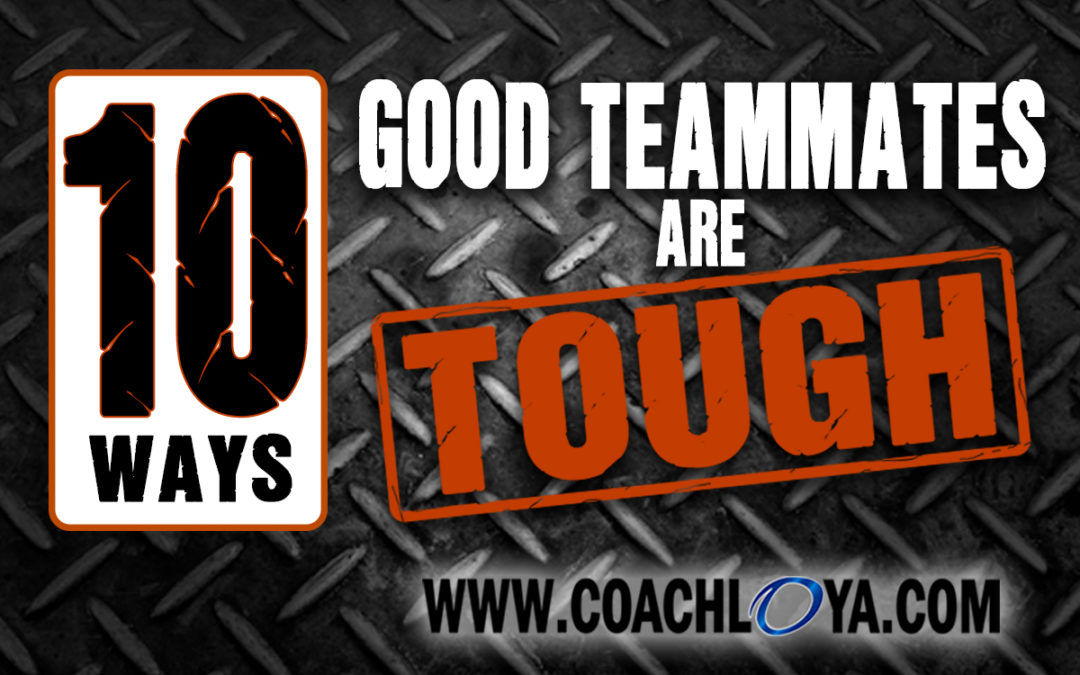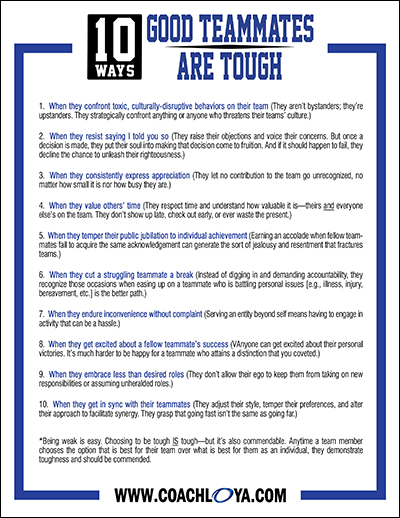One of my favorite books from recent years is Jay Bilas’ Toughness. If you haven’t read it, I highly recommend doing so. You don’t have to be a sports fan to appreciate its insightful message.
Bilas’ book was born from an article he wrote for ESPN in 2009 about what the word “toughness” means in the context of college basketball.
“Toughness has nothing to do with size, physical strength or athleticism. Toughness is a skill, and it is a skill that can be developed and improved,” Bilas said.
The article outlined a number of seemingly trivial, overlooked actions that influence a game’s outcome, like getting down in a defensive stance and staying there, not allowing yourself to get screened, and passing up challenged shots.
Essentially, Bilas’ list was comprised of acts of self-discipline—all of which were completely within a player’s control.
I’ve been thinking about Bilas’ book and his original article and how the concept of toughness applies specifically to the art of being a good teammate. Nearly everything good teammates do involves an element of toughness.
Here are ten ways good teammates are tough:
1. When they confront toxic, culturally-disruptive behaviors on their team. They aren’t bystanders; they’re upstanders. They strategically confront anything or anyone who threatens their teams’ culture.
2. When they resist saying I told you so. They raise their objections and voice their concerns. But once a decision is made, they put their soul into making that decision come to fruition. And if it should happen to fail, they decline the chance to unleash any righteousness.
3. When they consistently express appreciation. They let no contribution to the team go unrecognized, no matter how small it is nor how busy they are.
4. When they value others’ time. They respect time and understand how valuable it is—theirs and everyone else’s on the team. They don’t show up late, check out early, or ever waste the present.
5. When they temper their public jubilation to individual achievement. Earning an accolade when fellow teammates fail to acquire the same acknowledgement can generate the sort of jealousy and resentment that fractures teams.
6. When they cut a struggling teammate a break. Instead of digging in and demanding accountability, they recognize those occasions when easing up on a teammate who is battling personal issues (e.g., illness, injury, bereavement, etc.) is the better path.
7. When they endure inconvenience without complaint. Serving an entity beyond self means having to engage in activity that can be a hassle.
8. When they get excited about a fellow teammate’s success. Anyone can get excited about their personal victories. It’s much harder to be happy for a teammate who attains a distinction that you coveted.
9. When they embrace less than desired roles. They don’t allow their ego to keep them from taking on new responsibilities or assuming unheralded roles.
10. When they get in sync with their teammates. They adjust their style, temper their preferences, and alter their approach to facilitate synergy. They grasp that going fast isn’t the same as going far.
Being weak is easy. Choosing to be tough IS tough—but it’s also commendable. Anytime a team member chooses the option that is best for their team over what is best for them as an individual, they demonstrate toughness and should be commended.
As always…Good teammates care. Good teammates share. Good teammates listen. Go be a good teammate.
*Download the poster “10 Ways Good Teammates Are Tough” for FREE by clicking on the image or link below.






